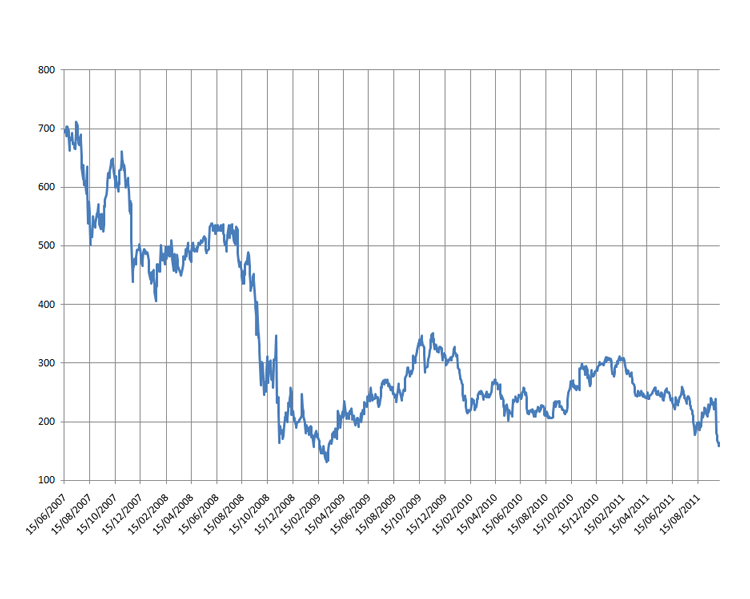Position Trading #6: Stock Picking
Oct 7, 2011 at 10:39 am in Position Trading by
My approach to position trading is primarily based around prudent risk- and money-management techniques like diversification, the application of stop loss orders, and prudent position sizing. This is in contrast to many traditional ‘investment’ approaches that focus almost exclusively on ‘stock picking’. Nevertheless, we do want to pick the right stocks at the right time rather than the right stocks at the wrong time or the wrong stocks at the wrong time.
For me, the right stocks are the ones that I expect to rise in price soon after I have established a position, and / or the stocks that have a lot of upside potential when they do rise.
The stocks that are most likely to rise in the short term are the ones that have just fallen suddenly and fast. But an immediate rise is not guaranteed, hence the need for a tight initial stop order and / or small exploratory position size.
The stocks that have the most upside potential are the bargain stocks that are trading at a mere fraction of their former glory prices, if only because investors once thought the significantly higher prices to be justified.
Here is an example:

At the time of writing, this stock — which is MAN Group, but that’s not a recommendation – has recently fallen significantly and currently sits as a historic low pow which (conveniently) also corresponds with a previous low price. It’s convenient because this possible resistance price provides a clue to stop order placement.
Catching these fallen knives is easier said than done, so remember that…
..my aim is to buy like a trader (with the intention of letting go quickly if my choice is proven wrong) but to hold like an investor (possibly forever) once the price starts to rise and while it continues to rise.
Why Stocks, not Indices or Other Instruments?
It is possible to apply the seven pillars of position trading to other financial instruments including stock indices, currencies, and commodities — in fact, anything with a fluctuating price — so you may well wonder: why focus on stocks?
For one thing, there are many more stocks (or equities) than there are stock indices, currency pairs and commodities; so there’s much more scope for diversifying across many exploratory positions.
Secondly, equities tend to have lower 2-digit and 3-digit prices, so it’s easier to practice prudent position sizing on stock positions than on 4-digit index positions.
Last but not least, stocks — in common with indices, but not currency pairs and commodities — tend to pay dividends which could help offset the spread bet rolling finance charges. And that’s the subject of my final installment in this series.
Tony Loton is a private trader, and author of the book “Position Trading” published by LOTONtech.

